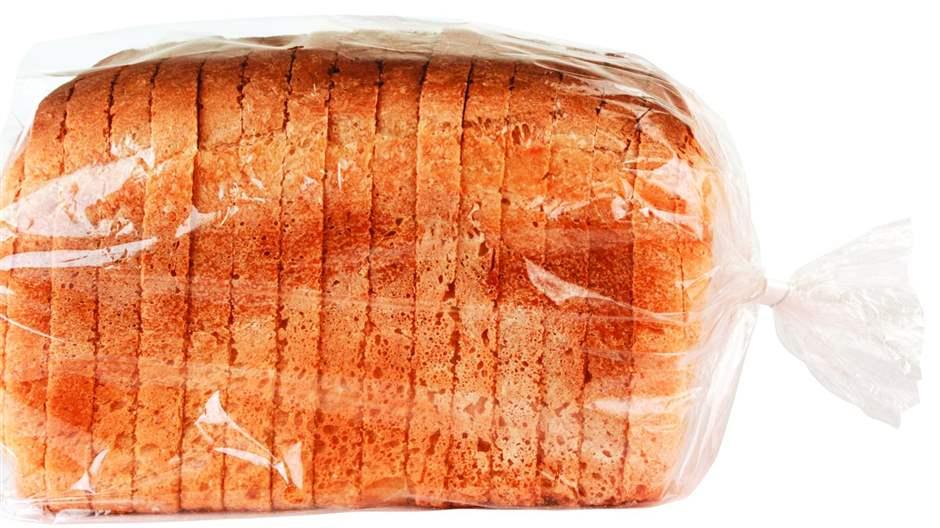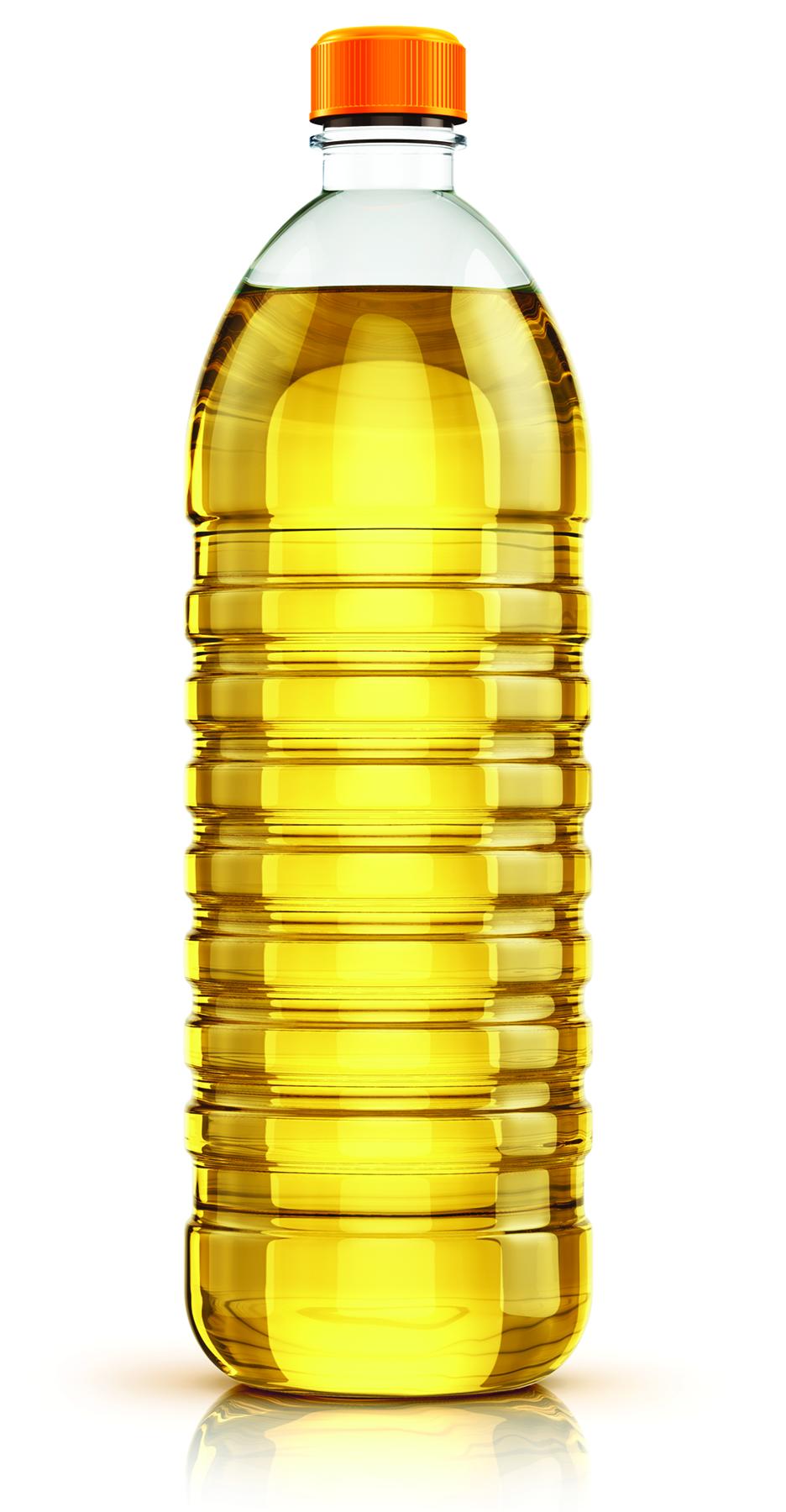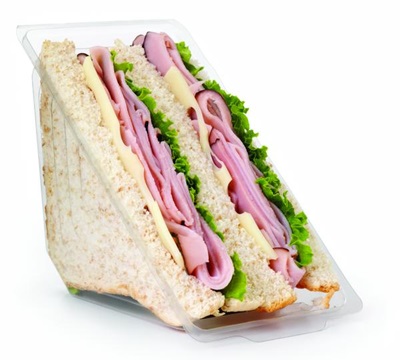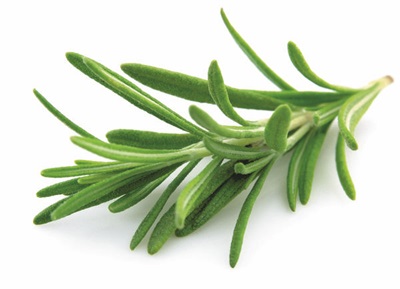Food Preservation in a Clean Label Era
INGREDIENTS
While food preservation may not be the most exciting of the ingredient categories (hello, flavors and colors), its importance to both food safety and food quality cannot be overstated.
Food preservatives are critical in keeping us safe from foodborne bacteria and ensuring that food maintains its flavor, color, and texture throughout its shelf life. For years, food manufacturers typically turned to tried-and-true synthetic preservatives to improve the safety and quality of their products. “Food protection has long been characterized by chemical preservatives, such as sodium diacetate or potassium lactate,” says Mark Cornthwaite, industry and marketing manager at DuPont Nutrition & Biosciences. This is changing, though, as consumer demands push for different types of preservatives, what the industry calls clean label.
“The minimum essentials for consumers these days, regarding understanding and trusting food, is the removal of artificial or chemical colors, flavors, and preservatives,” says Cornthwaite. “Today’s goal, therefore, for the consumer, is the replacement of these with betterunderstood and trusted ingredients without any impact on taste or flavor. For the manufacturer, it is about cost-effective solutions with minimal complexity but that also provide the needed protection and, most importantly, extended shelf life—the ultimate value being increased revenue from longer shelf life, and avoiding the loss of revenue from recalls, and maintaining brand and corporate reputation.”
This month’s Ingredients column details the approaches that several ingredient manufacturers are taking to develop so-called clean label preservatives that not only function on par or better than synthetic preservatives but also satisfy the needs of food formulators looking to adapt to the demands of label-conscious consumers.
Preservatives From a Variety of Sources
DuPont Nutrition & Biosciences offers an extensive range of antimicrobial solutions that meet the needs of both consumers and food manufacturers. The first one that Cornthwaite mentions is the MicroGARD range, a long-time fixture in the company’s ingredient portfolio. The MicroGARD range has been available for more than 35 years and “continues to protect millions of people from foodborne illness,” says Cornthwaite. While the ingredients in the range have a long history of use, today they are contributing their food preservative functions to newer-type food products that are hitting the market. “MicroGARD fermentates, for instance, have been one of three key ingredients used in the excellent plant-based meat formulations that have come to market. These key products maintain product quality throughout shelf life,” says Cornthwaite.
Another DuPont ingredient that provides protective properties to foods is BioVia CL600, a blend of cultured dextrose and vinegar. This antimicrobial is approved for use in a range of meat and poultry and readyto- eat products, where it provides many benefits, including a substantial increase in shelf life (40 days or more depending on the application and conditions), and microbial control (Listeria, for example), explains Cornthwaite. “In addition, the labeling is very clean label friendly, there is a positive flavor impact, it is easy to use, and it outperforms the less appealing chemical-sounding incumbents.”
The last type of food preservative Cornthwaite mentions are antioxidants based on extracts from plant sources. The company’s GUARDIAN range of antioxidants are extracts derived from rosemary, green tea, and acerola. The GUARDIAN antioxidants have, as Cornthwaite puts it, strong natural and clean label attributes and proven functions at maintaining color and flavor and providing an additional 2–7 days’ shelf life. Use the antioxidants in processed, marinated, and fresh meat.
While Cornthwaite notes several ingredient ranges that provide microbial control and shelf-life extension in meat products, his colleague offers details on a couple of ingredients that help to improve the safety and quality of certain bakery applications. “In September of 2019, DuPont brought a breakthrough way to impact corporate sustainability with innovation in decades-old ingredient technology,” observes Janelle Crawford, regional marketing lead. “GRINDSTED NG 100 was introduced as a patent-pending emulsifier for starch complexing that improves crumb softness in yeast-raised baked goods.”
GRINDSTED NG 100 can replace hydrates and replace other powdered monoglycerides that are available to manufacturers. As a replacement for hydrates, the nextgeneration monoglyceride powder matches hydrates’ performance in yeast-raised baked goods and helps to achieve sustainability goals in shipping, packaging, and warehousing with lower volumes and weight, says Crawford. Other benefits that GRINDSTED NG 100 offers over hydrates are that it allows ease of use as a free-flowing ingredient, helps to achieve safety goals by reducing slippage risks, and eliminates yield loss, adds Crawford. When using GRINDSTED NG 100 instead of other powdered monoglycerides, there can be a lower usage level with equal or better performance, savings in logistics and storage, improved powder quality (less clumping) in summer months, and potentially improved handling in pneumatic conveying systems, says Crawford.
To satisfy consumer demands for products made with natural ingredients that combine label friendliness and good flavor and do all of this in a cost-effective way, there’s Natamax B Plus, says Crawford. “Natamax B Plus is a patented GRAS complex composed of 12.5% natamycin and gamma-cyclodextrin that protects products naturally while maintaining freshness and taste for a longer period of time.” She adds that while standard natamycin has a low solubility, more than 98% of the natamycin in Natamax B Plus dissolves instantly in water to create a clear and easy-to-use solution. “Thanks to its even distribution in liquids, Natamax B Plus allows dosages to be optimized to reduce energy and maintenance costs, while efficiently protecting product throughout its shelf life.” The ingredient is sprayed on bakery products like bread to inhibit mold growth.
The last ingredient that Crawford mentions to help bakers and manufacturers improve freshness throughout the shelf life of a bakery product is POWERFresh 9705. “As a baker, formulating with POWERFresh 9705 from DuPont means your business can benefit from meeting shelf-life goals, reducing costs and waste, and opening opportunities for expanded geographic reach and alternative distribution models—all while protecting product quality and preserving brand loyalty,” says Crawford.
This enzyme-based ingredient is particularly effective in breads and buns, where it provides softness and improved eating quality, delivers improved resilience, improves sliceability, maintains desired moistness, and gives a higher processing tolerance across production lines, says Crawford.
Collaborate to Meet Formulation Needs
As ingredient manufacturers work closely with their customers, they continue to gain greater insights into what those customers need to solve formulation challenges and meet consumer demands. Courtney Schwartz, marketing director at Kemin Food Technologies, shares some of the top concerns around shelf life and preservation that the company’s customers have and the solutions that Kemin offers.
With the increase in product recalls related to Salmonella and E. coli in some baked goods due to contamination of raw materials, we see customers being more diligent in the sourcing,” says Schwartz. “This makes working with an ingredient supplier that has a high regard for safety and a robust quality control program very important. Kemin has a very clear set of guidelines and rules for our suppliers and an extensive raw material and quality testing program.”
The other challenge she mentions is finding a way to maintain shelf life while cleaning up labels to meet the demands of consumers. “When you are swapping out a synthetic ingredient for one that is more label friendly, it most often impacts the entire formulation. Having an ingredient supplier that understands these interactions is crucial to getting these changes made in a timely manner.”
Rosemary and green tea extracts help delay oxidation in the fats of snack foods and baked goods, and there’s also been an increase in the use of cultured and fermented ingredients from various sources such as dextrose or wheat to help inhibit mold growth, says Schwartz. “These vary depending on label requirements and objectives.” Enzymes have multiple functions. “We are seeing a variety of enzymes and blends being used to help replace some traditionally used synthetics to aid in softness and conditioning of doughs and final product to extend shelf life.”
It’s a challenge to balance the need for ingredients that maintain the quality and safety of food products and meet consumer demands for products that offer convenience, have long shelf lives, and are formulated without synthetic ingredients or formulated with familiar-sounding names. “In order to meet consumer demand, food manufacturers have to look at replacing cost-effective synthetic ingredients with more label-friendly, costlier options or sacrifice shelf life with the removal of synthetics,” explains Schwartz. “As consumers are also seeking longer shelf life for their foods, this presents a dilemma to many manufacturers. Some have chosen to raise prices and go the more labelfriendly route and others have chosen to stick with synthetics and ignore the consumer trends. It comes down to what the company strategy is. Many times, these hurdles come down to ingredient suppliers, who then work to develop multifunctional ingredients in an effort to reduce cost in use. Working with a supplier with great formulation expertise can help a manufacturer best identify a realistic cost target and portfolio of solutions that will help them meet those goals.”
One Kemin’s current focuses is on developing batch packs, premixes, mold inhibitors, and enzyme blends to help improve the quality, shelf life, and safety of corn and flour tortillas, says Schwartz. The company plans to expand these lines of ingredients throughout this year to include ones for gluten-free or high-fiber tortillas and is working on developing label-friendly ones to meet the consumer demand for clean label, adds Schwartz.
Target Specific Challenges
Like other ingredient manufacturers, Corbion continues to invest in the development of ingredients that both meet the clean label demands of consumers and solve the formulation challenges of manufacturers. Of course, it’s been a bit of a journey to get there. “When manufacturers first began to feel pressure to create new versions of their products with ‘cleaner’ labels, it seemed that consumer demands just didn’t add up,” says Kathy Sargent, global strategic innovation director at Corbion. “Many believed that delivering convenience, shelf life, safety, and an enjoyable eating experience couldn’t be achieved without the use of the synthetic solutions they had relied on for so long. But ingredient technology has made great strides in overcoming that perception. At Corbion, we have had great success in harnessing natural mechanisms and processes (e.g., fermentation) and in finding the right combination of properties in renewable, biobased materials to match, and sometimes exceed, the capabilities of more traditional solutions.”
Corbion’s expertise in food quality, safety, and shelf life offers opportunities for the company to develop food preservatives that solve functionality challenges in various food applications and help reduce production costs. For example, the company’s enzyme technology protects bakery products during processing, handling, and distribution so they last longer and have a “fresh-out-of-the-oven quality” that consumers expect, says Sargent. Its Ultra Fresh and Ultra Fresh Sweet enzymes can extend the freshness of in-store bakery products by several days and packaged and sweet baked goods by up to 45 days. “Not only do these solutions help bakers meet consumer preferences, but they also reduce food waste caused by stale products and they offer additional selling opportunities from fuller shelves,” says Sargent. “We’re able to tailor these enzyme solutions to help customers address all aspects of freshness, which include everything from softness to moistness, resilience, tenderness, and shelf life.”
An additional ingredient is Verdad MP 100, a naturally fermented ingredient solution that functions as a clean label mold inhibitor that helps bakers to reduce food waste, says Sargent. “Verdad MP 100 is unique in that it retains the functionality of traditional solutions while meeting consumer demands for simpler ingredient labels and leaving the flavor of baked goods intact.”
The Verdad range also extends to meat and poultry. There was a point in time when meat and poultry processors faced challenges when switching to clean label ingredient options. “Initially, for most processors, making the changes necessary to create products with the kinds of claims and labeling that attract ingredient-focused shoppers meant trading off some of the aspects of product quality that tend to be important to all meat lovers,” says Sargent. “But today, we have our broad Verdad range of clean label solutions—based on consumerfriendly ingredients like vinegar and other ferments and extracts—and we have become highly adept at applying those solutions in ways that accomplish not only preservation and food safety goals, but also quality and other product performance goals. These solutions make it possible for manufacturers to win the hearts and palates of label-conscious consumers without sacrificing what’s important to everyone else.”
Look for more innovation from Corbion in the future as the company discovers “new ways to expand on the essential building blocks in our clean label portfolio,” says Sargent. This work will benefit meat and poultry processors and bakery manufacturers. For example, Sargent says that the company helps meat processors increase the effectiveness of safety programs in their plants by applying Corbion’s lactic acid as a kill step treatment for carcasses. “As our clean label solutions evolve, manufacturers have more ways to enhance taste, texture, and other product qualities important to consumers while, at the same time, improving factors that matter in terms of performance, such as cook yield, sliceability, color retention, and shelf life,” says Sargent. In the coming months, look for new ingredients that help processors replace synthetic ingredients without affecting quality and performance, she adds.
To develop next-generation food preservatives for bakery manufacturers, Sargent says that Corbion draws on what it’s learned in one product category and sees how it can benefit another. “For example, right now we’re working to translate the food safety innovations we have achieved with meat products to bakery products. At the same time, we’re reviewing our bakery solutions to see how we could apply one of those innovations to meat products as well.”
The company is also helping bakers through innovations in its portfolio of emulsifiers to improve the overall quality and consistency of bakery products. Also noteworthy is Corbion’s commitment to meeting the needs of bakers as clean label demands shift toward transparency and sustainability. This includes the company’s use of palm oils that are RSPO-certified and sourced from suppliers committed to reducing the negative effects on palm-growing regions and their communities in all of its emulsifiers, says Sargent.
“Today’s baking environment isn’t what it used to be,” continues Sargent. “With less skilled labor, there is more emphasis on cost savings and an intense amount of pressure to delight consumers with delicious products. With all of these factors, you can’t risk taking a chance on ingredients that will slow you down. In fact, you need ingredients that are consistent enough to keep everything running like a well-oiled machine.”
Innovate to Keep Up with Demands
For several years, the clean label demands of consumers have changed the food landscape. Now, even the concept of clean label has evolved. “What is different now is that this goes beyond what is printed on the food label. It is not good enough to have clean/clear labels, but food manufacturers also want to know how these plant-derived ingredients are processed,” says Jane Quartel, director of product management—antioxidants and food protection at Kalsec.
Calling this “clean processing,” Quartel says that this evolution of the clean label trend creates further transparency for consumers. “However, consumer demand for naturally sourced ingredients continues to rise and provides the manufacturer with the opportunity to pass the increased cost on to the consumer, who is willing to pay more for such products.”
As mentioned throughout this article, many food manufacturers face some functionality challenges when switching from synthetic ingredients to ones that are naturally derived. For instance, green tea leaves are high in catechins and flavonoids, and Kalsec has developed naturally derived antioxidants based on the beneficial compounds. The thing is, green tea is soluble in water and is not particularly easy to use in food matrices that require ingredients to be oil soluble, says Quartel. To this end, Kalsec has developed an oil-soluble green tea extract that functions in oil-based applications such as frying oils and snack foods, she adds. In addition to functionality challenges, manufacturers may face increased costs associated with many naturally derived ingredients. “Going natural is definitively more expensive than staying with synthetics,” says Quartel. “Synthetics are inexpensive and plentiful; you run out and the [ingredient manufacturing] plant can make more. But with natural antioxidants, one depends on the growth and harvest of one or more crops. Factors such as drought or other crop failure can impact the amount of supply.” The industry has responded, she says, with advances in crop development such as natural seed selection, plant breeding, and crop selection to minimize the effects of conditions that are difficult to control.
As the industry continues to dedicate resources to improve agronomy efforts, it is also innovating on the ingredient development side when it comes to naturally derived preservatives. Kalsec uses an active screening program to identify novel natural antioxidants and preservatives and works with an international academic research consortium, says Quartel. The area of synergy looks promising, she adds. “What that means is that by combining different antioxidants together, not only are we seeing an additive effect (1+1=2), [but] in some instances we are seeing a synergistic effect (1+1=3).” As a result, she says, manufacturers can use fewer antioxidants than would be intuitive to use to achieve cost savings or, alternatively, they can use the same dosage levels to extend shelf life.
















